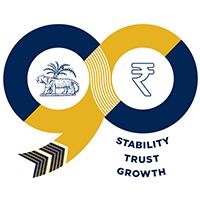Speeches - আরবিআই - Reserve Bank of India
Speeches
At the outset, I would like to thank the organisers for inviting me to this 17th edition of the Mint BFSI Summit & Awards. I am delighted to get this opportunity to engage with you during this event. As a regulator for banks and non-banking financial companies (NBFCs), I thought this could be an occasion to reflect on a less debated area for the regulated entities - their liabilities management and the challenges. In flagging the mismatch between deposit and credit growth, Governor Das had previously drawn our attention to the rising challenge in this area. So, I thought of wading in with a few thoughts for your consideration.
At the outset, I would like to thank the organisers for inviting me to this 17th edition of the Mint BFSI Summit & Awards. I am delighted to get this opportunity to engage with you during this event. As a regulator for banks and non-banking financial companies (NBFCs), I thought this could be an occasion to reflect on a less debated area for the regulated entities - their liabilities management and the challenges. In flagging the mismatch between deposit and credit growth, Governor Das had previously drawn our attention to the rising challenge in this area. So, I thought of wading in with a few thoughts for your consideration.
Good Morning Ladies and Gentlemen. At the outset, I would like to thank Shri Ravi Mital, Chairperson, Insolvency and Bankruptcy Board of India for inviting me to this international conclave on the theme ‘Insolvency Resolution: Evolution & Global Perspective’ being held in collaboration with INSOL India. A confluence in the thought processes of policy makers, practitioners and academicians would perhaps help to shape an objective assessment of the resolution & insolvency regime in the country. This should then enable us to chart out a future path for the resolution processes to make it more effective and efficient.
Good Morning Ladies and Gentlemen. At the outset, I would like to thank Shri Ravi Mital, Chairperson, Insolvency and Bankruptcy Board of India for inviting me to this international conclave on the theme ‘Insolvency Resolution: Evolution & Global Perspective’ being held in collaboration with INSOL India. A confluence in the thought processes of policy makers, practitioners and academicians would perhaps help to shape an objective assessment of the resolution & insolvency regime in the country. This should then enable us to chart out a future path for the resolution processes to make it more effective and efficient.
Regional Director for Mumbai Regional Office, Shri Suman Ray; Regional Director for Nagpur Regional Office, Shri Sachin Shende; Chief General Manager, National Bank for Agriculture and Rural Development, Ms. Rashmi Darad; senior officials from Bank of Maharashtra, Convenor Bank, SLBC Maharashtra, senior executives from banks, Lead District Managers (LDMs), Lead District Officers (LDOs) and my colleagues from Reserve Bank of India, present here.
Regional Director for Mumbai Regional Office, Shri Suman Ray; Regional Director for Nagpur Regional Office, Shri Sachin Shende; Chief General Manager, National Bank for Agriculture and Rural Development, Ms. Rashmi Darad; senior officials from Bank of Maharashtra, Convenor Bank, SLBC Maharashtra, senior executives from banks, Lead District Managers (LDMs), Lead District Officers (LDOs) and my colleagues from Reserve Bank of India, present here.
Respected Governor, Reserve Bank of India, Deputy Governor Shri M Rajeshwar Rao, Chairmen, MD CEOs, Whole time directors and distinguished members of the Board of Private Sector Banks, colleagues from RBI, ladies, and gentlemen. A very good morning to all of you.
Respected Governor, Reserve Bank of India, Deputy Governor Shri M Rajeshwar Rao, Chairmen, MD CEOs, Whole time directors and distinguished members of the Board of Private Sector Banks, colleagues from RBI, ladies, and gentlemen. A very good morning to all of you.
This year’s Nobel Prize in physics celebrated the role of artificial intelligence (AI) in revolutionising the way we work and live. It is widely believed that AI and robotics will usher in a new wave of secular innovation, much like past breakthroughs in steam power and personal computers. Silently, new technologies are offering a way out of the cross currents of diverging macroeconomic and policy pathways, geopolitical tensions, geoeconomic fragmentation and climate change in which the global economy is transfixed. Accordingly, these technologies are heralding a brighter future, arguably holding the key for many emerging and developing economies to escape the middle-income trap. It is estimated that generative AI itself could increase global GDP by $7-10 trillion over the next three years. Large language models are estimated to increase the productivity levels of workers by 8 to 36 per cent.
This year’s Nobel Prize in physics celebrated the role of artificial intelligence (AI) in revolutionising the way we work and live. It is widely believed that AI and robotics will usher in a new wave of secular innovation, much like past breakthroughs in steam power and personal computers. Silently, new technologies are offering a way out of the cross currents of diverging macroeconomic and policy pathways, geopolitical tensions, geoeconomic fragmentation and climate change in which the global economy is transfixed. Accordingly, these technologies are heralding a brighter future, arguably holding the key for many emerging and developing economies to escape the middle-income trap. It is estimated that generative AI itself could increase global GDP by $7-10 trillion over the next three years. Large language models are estimated to increase the productivity levels of workers by 8 to 36 per cent.
পেজের শেষ আপডেট করা তারিখ: জানুয়ারী 21, 2025


















